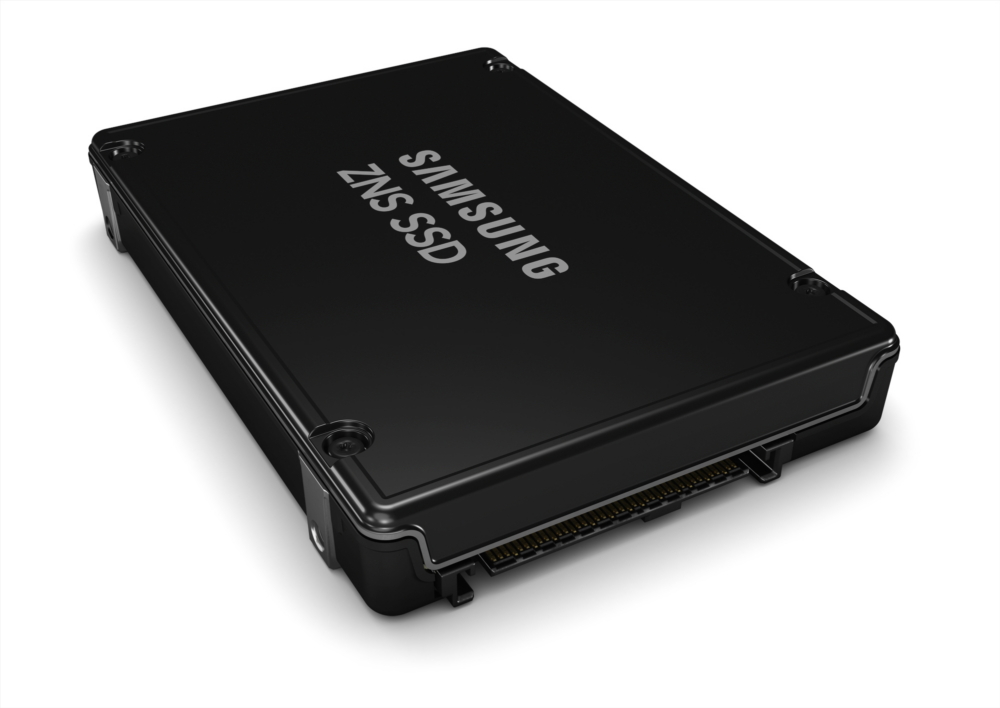Samsung Introduces Its First ZNS SSD With Maximized User Capacity and Enhanced Lifespan
Maximum available storage capacity and 3-4x longer lifespan enable server systems to run big data and AI applications more reliably and efficiently

Samsung Electronics, the world leader in advanced memory technology, today unveiled its new enterprise solid-state drive (SSD) featuring Zoned Namespace (ZNS) technology — the PM1731a. Leveraging ZNS, the SSD will maximize available user capacity and offer an extended lifespan in storage server, data center and cloud environments.
“Samsung’s ZNS SSD reflects our commitment to introducing differentiated storage solutions that can substantially enhance the reliability and lifetime of server SSDs,” said Sangyeun Cho, senior vice president of the Memory Software Development Team at Samsung Electronics. “We plan to leverage quad-level cell (QLC) NAND technology in our next-generation ZNS drives to enable higher thresholds for storage performance and capacity in the enterprise systems of tomorrow.”
ZNS allows data to be grouped based on their usage and access frequency, and stored sequentially in independent zones within an SSD. Without the need to move and rearrange data, ZNS SSDs can significantly reduce the number of write operations, lowering the drive’s write amplification factor (WAF) — the amount of actual writes performed by the drive compared to writes initially instructed by the host system. The closer the WAF is to one, the more efficient the SSD and the longer it will last.

Based on ZNS, the new Samsung SSD can achieve a WAF close to one, a major improvement over typical server SSD values between three and four. This will make the drive last up to four times longer than conventional NVMe SSDs, making it a greener, more sustainable solution for server infrastructures. ZNS also allows users to take advantage of the SSD’s full capacity by eliminating the need for overprovisioning, which would have required reserving some storage space for background tasks. These improvements will enable enterprise customers to handle big data and artificial intelligence applications with much greater efficiency.
Built upon Samsung’s sixth-generation V-NAND, the 2.5-inch PM1731a will come in two terabyte (TB) and four TB models. The SSD will feature dual ports, ensuring the drive is fully accessible for continuous operations and minimizing downtime. This is essential for enterprises and public cloud companies who run mission-critical, data-intensive applications, and cannot afford any pause in the continuity of their businesses.
Samsung has been actively engaging in several open-source projects to help expand the ZNS ecosystem. The company will make its ZNS technology available to xNVMe, which provides software libraries and tools to improve the performance of NVMe devices. The company is also participating in the Storage Performance Development Kit (SPDK) community created by Intel, enabling SPDK users to implement ZNS more easily.
Samsung plans to mass-produce ZNS SSDs in the second half of the year and continue working with global enterprise storage companies to optimize its ZNS drives across various customer environments.

| Where to Buy a Product | |||
|
|
    
|

|
VISIT RETAILER ➤ |
 |
    
|

|
VISIT RETAILER ➤ |
 |
    
|

|
VISIT RETAILER ➤ |
 |
    
|

|
VISIT RETAILER ➤ |
We use affiliate links on the blog allowing NAScompares information and advice service to be free of charge to you. Anything you purchase on the day you click on our links will generate a small commission which is used to run the website. Here is a link for Amazon and B&H. You can also get me a ☕ Ko-fi or old school Paypal. Thanks! To find out more about how to support this advice service check HERE
Seagate Ironwolf vs WD Red NAS Hard Drives
The BEST NAS of 2025
Terramaster TOS 7 Preview - Next Gen NAS Ready?
What is QNAP Planning for 2026? Round Up of the QNAP 2025/2026 Event in London
2x 10GbE to USB4 Adapter - DO YOU NEED THIS?
New Gl.iNet Beryl 7, Comet 5G SIM KVM and Flint 3e Value Router Revealed
Access content via Patreon or KO-FI
Discover more from NAS Compares
Subscribe to get the latest posts sent to your email.





DISCUSS with others your opinion about this subject.
ASK questions to NAS community
SHARE more details what you have found on this subject
IMPROVE this niche ecosystem, let us know what to change/fix on this site